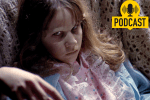There are few sights so satisfying in horror film as the truly evil young. In a culture that revolves around the sacrosanct child, now even going so far as to prioritize not-yet-children’s lives over that of their vessel/mothers, it is cathartic to see horror films and TV series acknowledging that children are not always innocent and sweet. In fact, at times they can be little monsters.
Whether it is Regan pissing and vomiting in The Exorcist (1973), the bright-eyed children from hell in Village of the Damned (1960), or the fanged newborn in It’s Alive (1974), the evil child points to both the hellish expectations that can accompany parenthood and our own desires to flee conventions. Through horror films we can vicariously become what Andrew Scahill calls “the revolting child,” an embodiment of our desire for anti-heteronormative liberation. Read more












